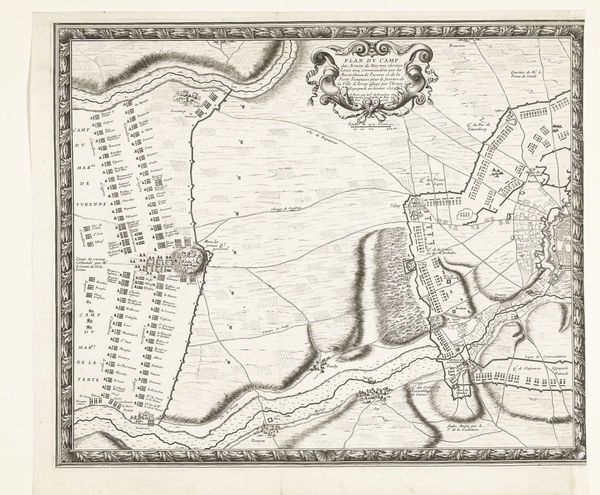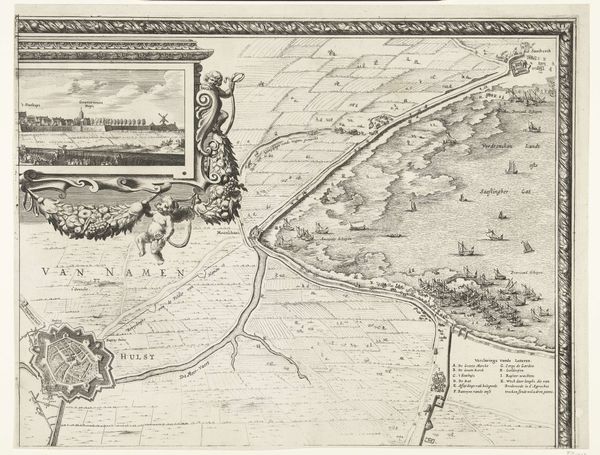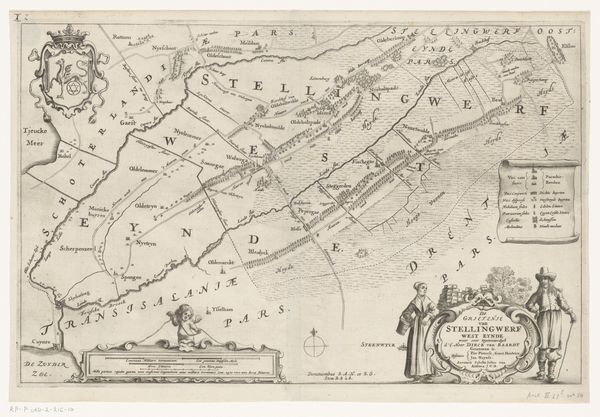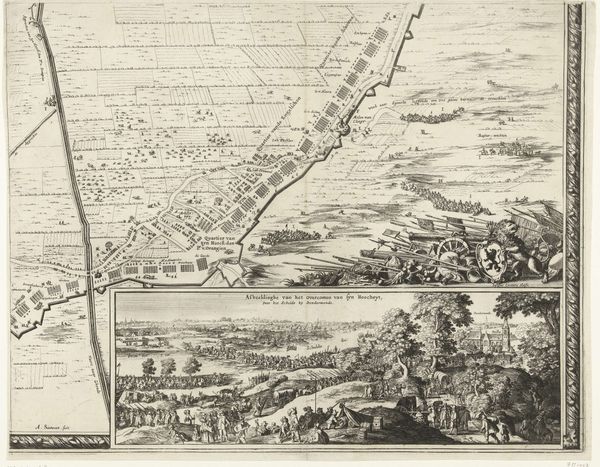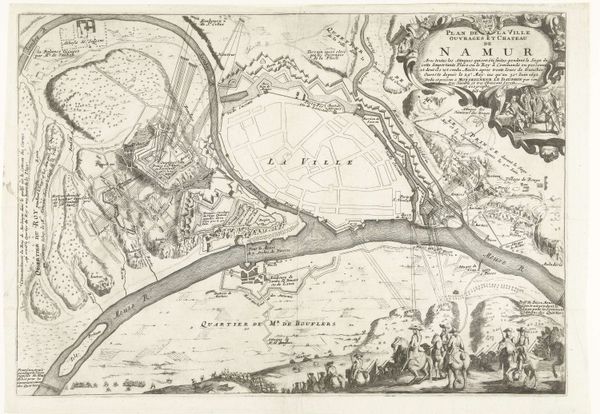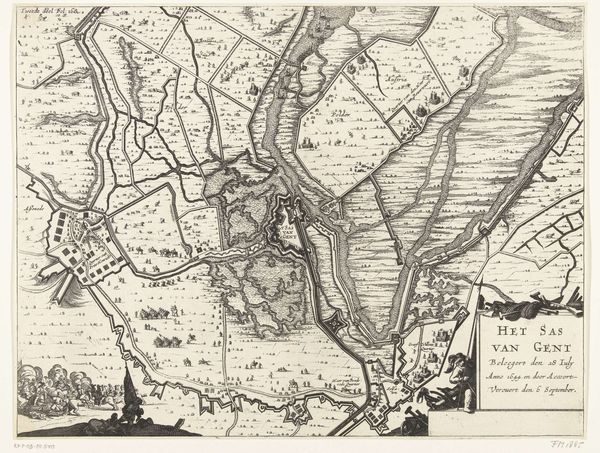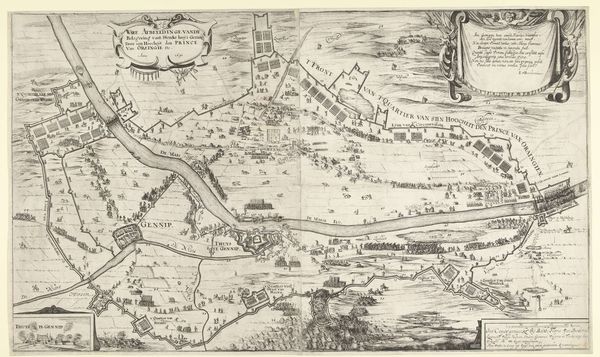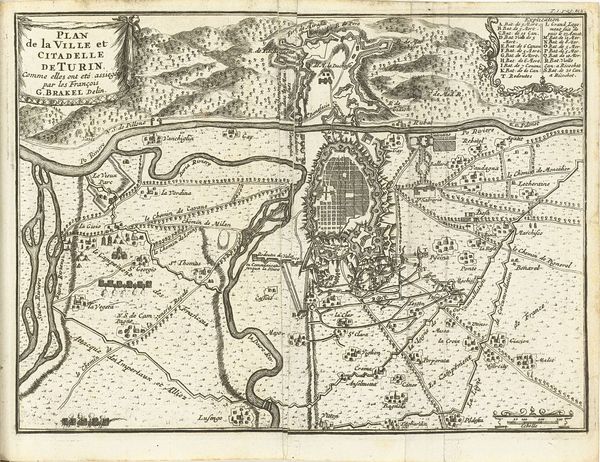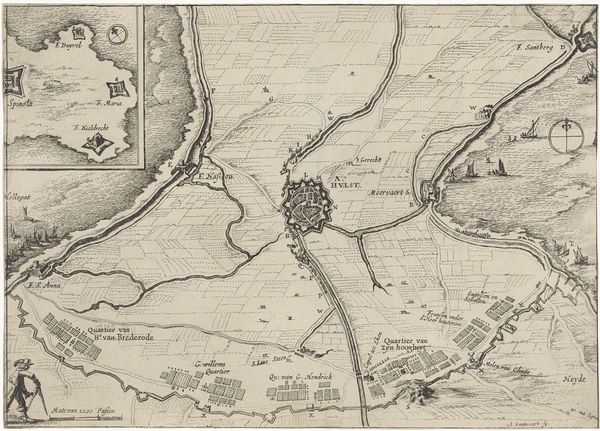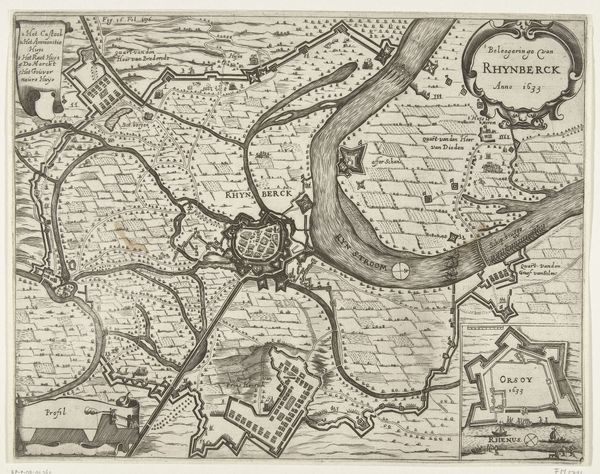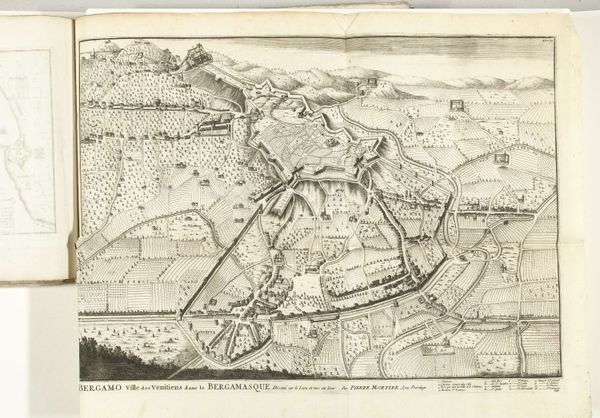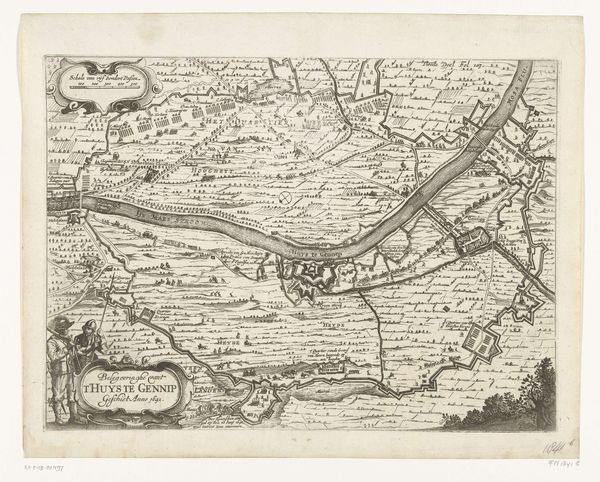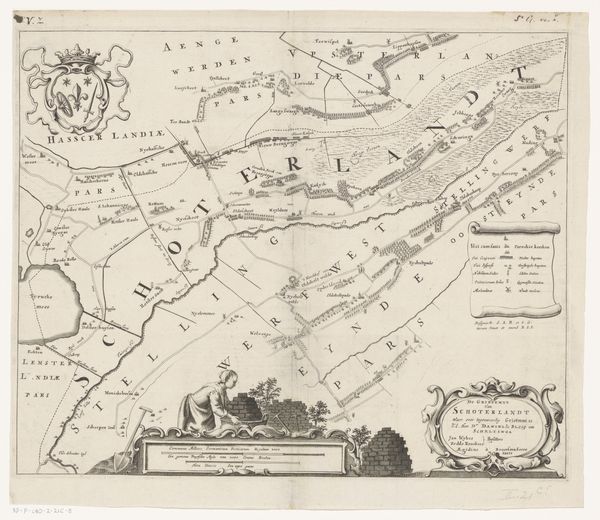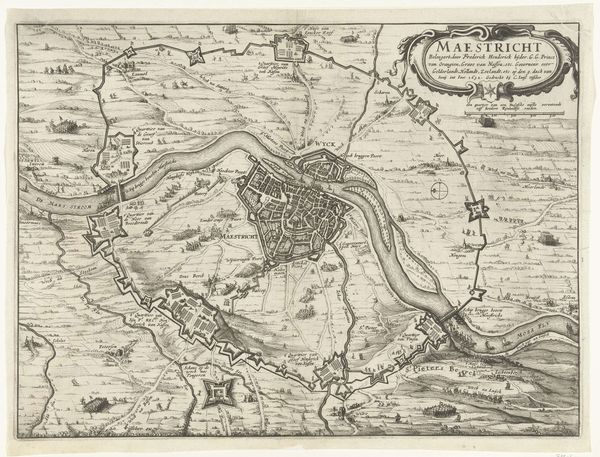
Beleg en verovering van Hulst door Frederik Hendrik (blad linksonder), 1645 1646
0:00
0:00
abrahamdirckszsantvoort
Rijksmuseum
print, etching
#
dutch-golden-age
# print
#
etching
#
line
#
cityscape
#
history-painting
Dimensions: height 420 mm, width 535 mm
Copyright: Rijks Museum: Open Domain
Editor: So, this print is called "Siege and Conquest of Hulst by Frederick Henry", created by Abraham Dircksz. Santvoort in 1646. It's an etching. At first glance, it feels like a technical document, but also sort of painterly due to the density of the etched lines, particularly near the lower left corner. How do you approach something like this? Curator: From a materialist perspective, the etching process is central. Consider the copper plate itself, the labor involved in its creation, and the chemicals used in etching. The lines are evidence of a very direct engagement between artist and material, almost a collaboration between hand and acid. Do you see the level of detail conveyed here? What does that labor communicate? Editor: Well, there’s an immense amount of detail—it's incredibly meticulous. I imagine the creation of this must have taken a significant amount of time. The small figures and landscape show great care. I guess that speaks to the perceived importance of the subject being depicted, but I never really thought about the material itself embodying this sense of...importance or...purpose? Curator: Precisely. It is useful to consider that the making process influences meaning, impacting the consumption of the work by its intended audience, namely, a patron or ruling class. It immortalizes power structures, both military and social. Editor: I see your point about the process. By considering the artist's work, the materials, we understand more clearly the intended purpose of such detailed piece: conveying power, rather than solely a simple depiction of the siege. Curator: Exactly. Consider also the market for prints like these. Were they for personal enjoyment, propaganda, or historical record-keeping? What impact would their method of production and material accessibility have? Editor: Thinking about this print as an object deeply rooted in the means of production makes its purpose and context much more tangible and less abstract for me. Thank you!
Comments
No comments
Be the first to comment and join the conversation on the ultimate creative platform.
